Let’s queue-up the broken record. I like visiting breweries and invariably I include an article focused on the topic every time I travel. So I’ll start with the usual clarifications, caveats and disclaimers.
- I created this page primarily for my personal recollection so feel free to skip it.
- We behaved responsibly and focused on quality over quantity. By sharing samplers/flights we generally consumed the equivalent of a single beer or less at each location.
- These visits happened over an entire week; no bingeing.
- I focus my writing on experiences and places rather than beverages. That probably sounds weird but people can consult plenty of other sites like Untappd and RateBeer for that stuff.
And a confession. We chose to stay near Louisville’s NuLu area specifically because of its proximity to a lot of breweries.
Naturally I created a map of brewery locations ahead of time. Then, as we visited each location I changed the color from blue to green. We couldn’t hit them all so we concentrated on those closest to us. Thus we hit seven breweries within the immediate vicinity — all within easy walking distance — plus a bonus spot across the river. Readers can probably figure out the approximately place where we stayed by pondering the pattern.
Falls City Beer
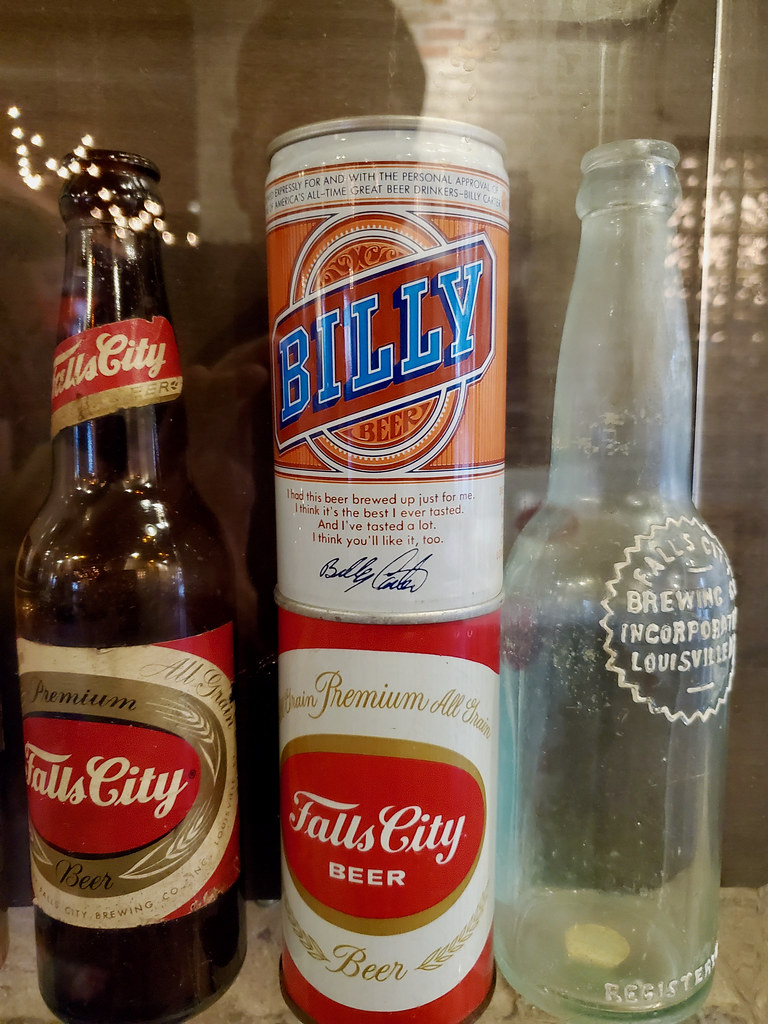
So we started close to home and radiated outward. Nothing sat closer to us than Falls City Beer at two-tenths of a mile. Like, less than a five minute walk. It had an interesting history too. The name derived from a Louisville nickname based on the nearby falls of the Ohio River. Founded originally in 1905, it survived prohibition, became Louisville’s most popular beer, and disappeared in 1978 due to national competition. Subsequent investors and contract brewers bought and sold the trademarks several times. The current brand owner built a production brewery within the last few years.
The original Falls City famously partnered with Billy Carter, brother of President Jimmy Carter in the late 1970’s. Billy had something of a reputation. Let’s say he enjoyed bargain beers with great frequency (is that polite enough?). So Falls City produced Billy Beer as their failed, last-ditch effort to forestall bankruptcy. Three other breweries brewed Billy Beer afterwards. This resulted in literally billions of cans of Billy Beer, now infamous in breweriana communities. Everyone thought Billy would increase in value so everyone horded cans. Kind of like Beanie Babies at their height. Now the value of a pristine Billy Beer can is about 25¢ on a good day.
Akasha Brewing Co.

Names always fascinate me. Naturally I wondered about Akasha Brewing Co. So I checked the definition: “Akasha means space or æther in traditional Indian cosmology, depending on the religion“. I didn’t notice much Indian cosmology in the actual brewery so I guess it probably referred to the state of mind of the brewers. It was a nice place with indoor and outdoor seating. I also noticed a BBQ joint next door. Unfortunately I’d already eaten so I enjoyed my flight on Akasha’s patio and filed the food option away for future reference.
Ten20 Craft Brewery
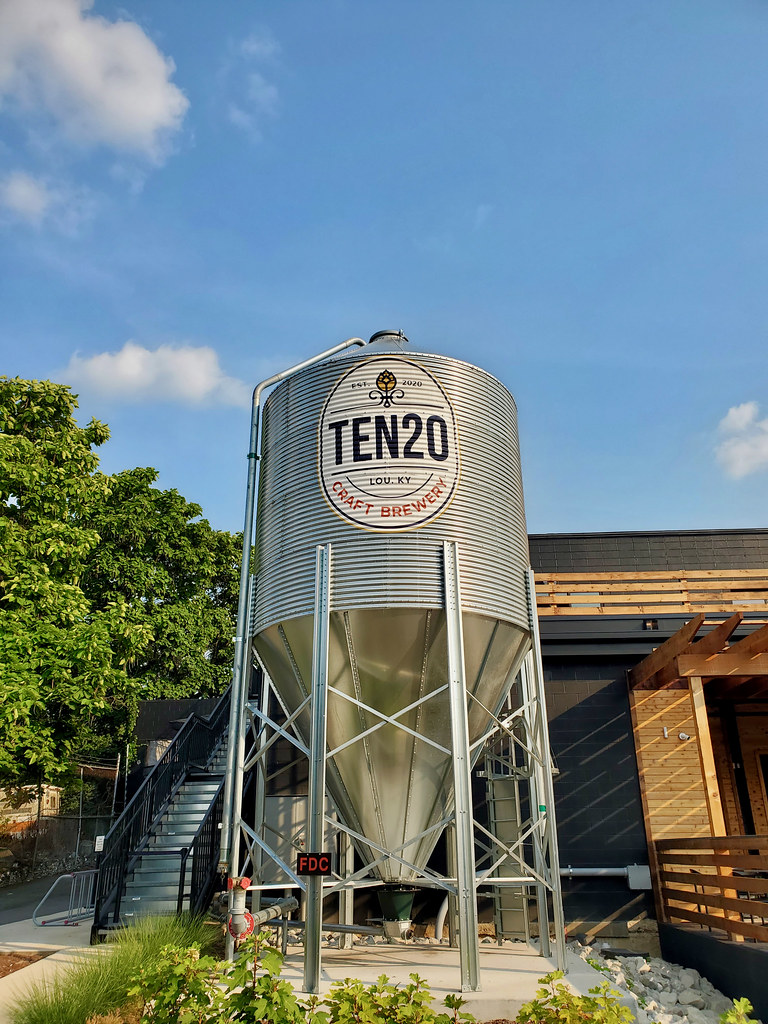
The big grain silo outside of Ten20 said “established 2020”. Goodness, I couldn’t imagine trying to open a business during COVID. That must have been quite a financial and logistical challenge. The space is huge. No worries about social distancing there. We sat in a back room probably fifty feet away from the next nearest patron.
The building looked new from the outside although some of the interior walls seemed to show some age. Sure enough, it used to be a warehouse of some type (see street view image). As for the name, it came from the address, 1020 E. Washington Street. Overall the area reminded me of another warehouse district converting rapidly into a brewery hotspot: Scott’s Addition in Richmond, Virginia.
West Sixth NuLu

West Sixth Brewing also got its name from an address, just not from their location on Market Street in Louisville. Their flagship brewery resided at West Sixth Street in Lexington, Kentucky. So they appended NuLu to their name when they came to Louisville, becoming West Sixth NuLu.
It had an interesting street presence, or rather a lack of one. A small entryway led to a narrow hallway (photo). It had sort-of a speakeasy feel going in. Then it opened up to a large two-story courtyard with balconies. The brewery itself was actually quite roomy.
Goodwood Brewing and Spirits
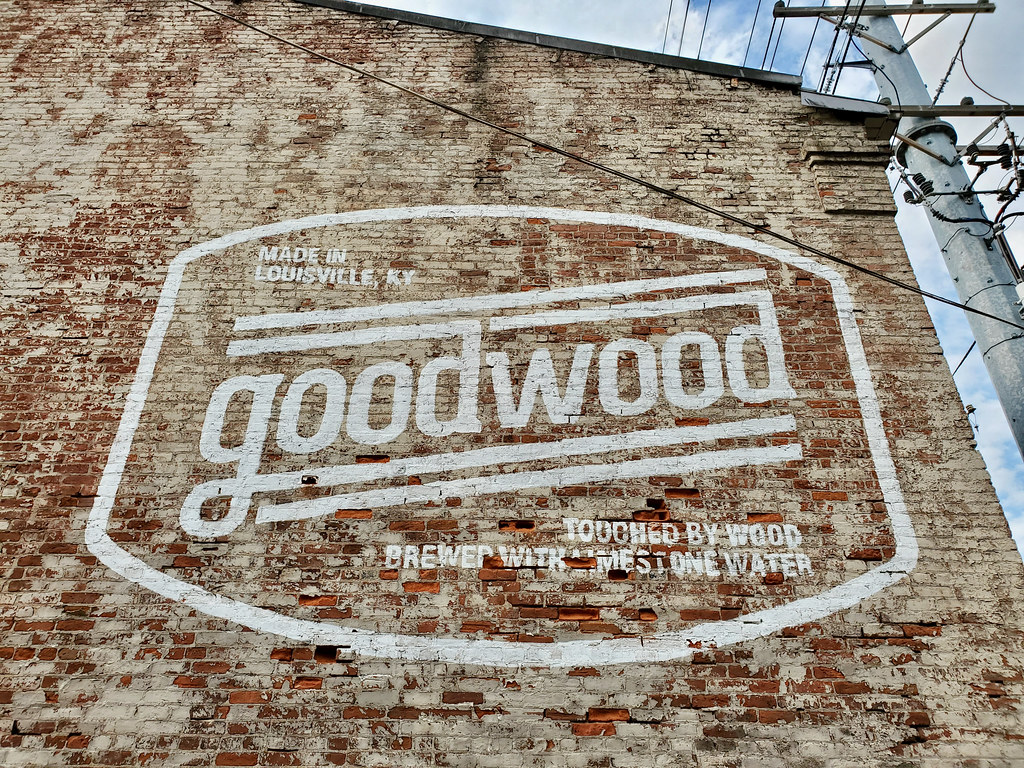
I guess I’m still on the name thing. Here, Goodwood Brewing used the slogan “Touched by Wood”. They aged all of their beer in wooden barrels. I’ve seen plenty of breweries with barrel programs, however I’d not seen one using barrels exclusively until now. So that was notable. The wood touching their beers included poplar, oak and ash, either as new barrels or reclaimed from local distilleries and vineyards. I’m sure their proximity to Kentucky’s Bourbon Trail helped them find all those barrels.
Gravely Brewing Co.
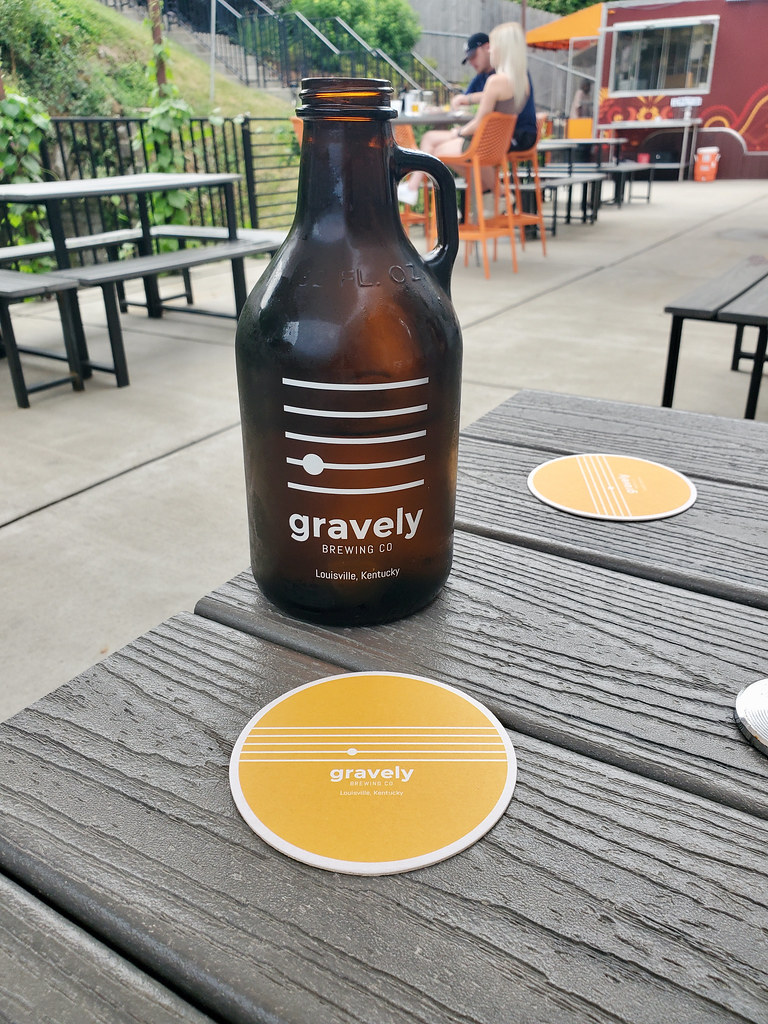
I don’t know what made Gravely Brewing gravely, so the naming streak ends here.
All of the breweries I visited in Louisville followed a business model that’s becoming more popular. They were strictly breweries, not brewpubs, so they were not restaurants. As a result they could operate much more cost effectively. However that didn’t mean dining options didn’t exist. They all allowed outside food. Lots of nearby restaurants offered carry-out options so people could bring whatever they wanted into the breweries.
Gravely took an even more interesting twist. It featured a permanent food truck on premise (visible in the background of the photo). They called the arrangement “an exclusive food partnership”. That let them function somewhat like a brewpub but without the financial risk of running a restaurant too.
I also bumped into a little history. Any earlier brewery operated there at the turn of the last century, more than a hundred years ago. Two of the old lagering cellars still existed on the property. A corner of one appears on the upper-left of the photo, or feel free to check out a better photo.
Mile Wide Beer Co.

Mile Wide Beer references the width of the nearby Ohio River (although it actually seemed closer to a half-mile at Louisville). It stood behind a row of huge grain silos, not brewing silos but ones that I’m sure funneled grain onto rail cars heading from farm to city in prior decades. They seemed to be abandoned now so I suppose they remain for historical effect. Anyway, I could see the silos easily from the neighborhood where we stayed (view).
Actually, Mile Wide might have been the closest brewery to us as the crow flies. But then we had to take a U-shaped walk to get around some warehouses, a drainage ditch and railroad tracks. And well… it still wasn’t terribly far away.
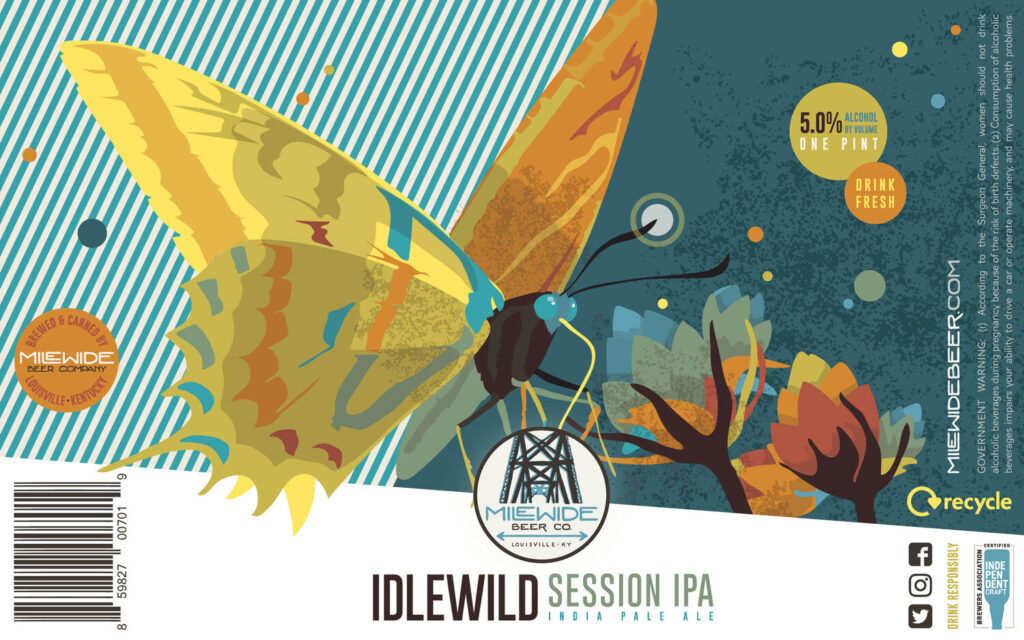
Oh, I just noticed the tap handle for Idlewild Session IPA on the far left side of the photograph. I wonder if they named it for the butterfly farm we visited? The label I downloaded seems to say yes.
Upland Brewing Jeffersonville

This was the bonus visit. Upland Jeffersonville sat directly across the Ohio River from Louisville, in nearby Indiana. Yet, it couldn’t have been more completely different than the other breweries we visited just a couple of miles away. It was like, leave the bridge and transform instantly from city to suburb. Car oriented. Wide streets. Huge parking lots. A Hooters right across the street.
Upland sat atop a bluff above the river, offering great views of downtown Louisville. They also had something like 20 taps available. However, I’m not sure they actually brewed there because I couldn’t find any equipment. They might be a tap house supplied from their home base in Bloomington. I counted it as a visit anyway.
Articles in the Ohio River Series
- Orientation
- Portsmouth
- Onward Towards Louisville
- Exploring Louisville
- Brewery Cluster
- The Big Four
- Corydon Loop
- Ark Loop
- Evansville Loop
- Heading Back Upstream
- Marietta
See Also: The Complete Photo Album on Flickr

Leave a Reply